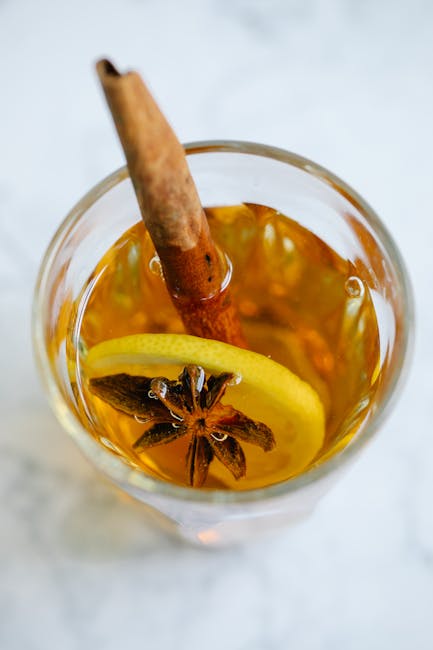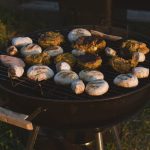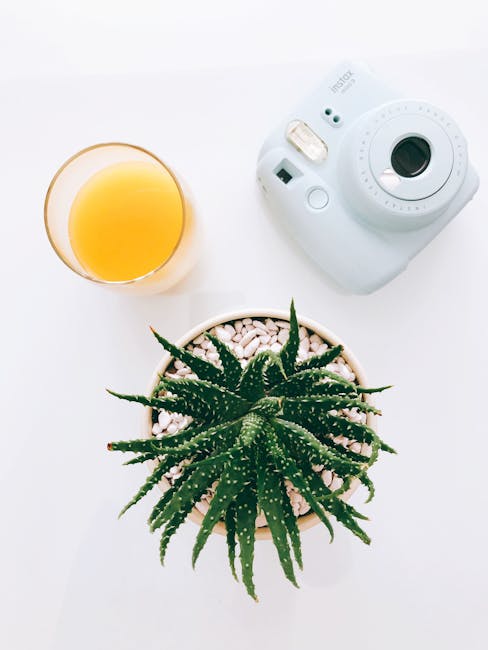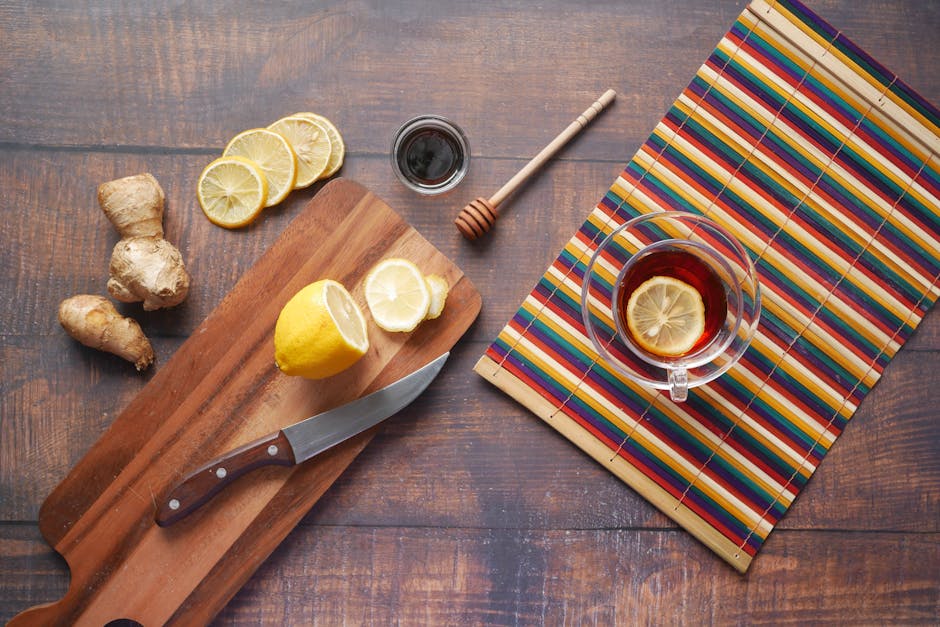Refreshing Ginger Lemon Tea, a vibrant and invigorating beverage, boasts a history as rich and complex as its flavor profile. While pinpointing its exact origin is difficult, its components – ginger and lemon – have been used individually for centuries across various cultures for their medicinal and culinary properties. Ginger, originating in Southeast Asia, holds a place of significant importance in traditional Chinese medicine, dating back thousands of years. Its potent anti-inflammatory and digestive properties were highly valued, making it a staple in countless remedies and culinary preparations. Similarly, lemons, believed to have originated in Northeast India, were prized by ancient civilizations for their cleansing and therapeutic qualities, finding their way into both food and medicine in the Mediterranean and beyond.
The precise moment when ginger and lemon were combined to create this specific tea blend remains shrouded in mystery. However, the convergence of these two ingredients likely reflects a natural evolution of culinary and medicinal practices. The popularity of herbal infusions and the increasing awareness of the benefits of natural remedies undoubtedly played a pivotal role in its development. Historically, tea blends often emerged organically, with individuals experimenting with different combinations to achieve desired tastes and health benefits. This likely occurred independently in various regions, leading to diverse variations of ginger lemon tea across the globe.
Today, Refreshing Ginger Lemon Tea enjoys widespread popularity, transcending geographical boundaries and cultural differences. Its appeal stems from its versatility – it can be enjoyed hot or cold, making it a perfect beverage for any season. Furthermore, the readily available ingredients and simple preparation method contribute to its accessibility. Recent studies highlight the growing interest in functional beverages, with a significant portion of the population actively seeking out drinks that offer health benefits beyond simple hydration. Statistics show a 20% year-on-year increase in the consumption of herbal teas globally, reflecting a consumer shift towards natural and wellness-focused options. This trend strongly supports the continued rise of refreshing ginger lemon tea as a preferred choice for health-conscious consumers.
Beyond its refreshing taste and health benefits, ginger lemon tea also holds cultural significance in many parts of the world. In some cultures, it’s traditionally consumed as a remedy for common ailments like colds and flu, while in others, it’s associated with rituals and celebrations. Its bright yellow color and zesty aroma often symbolize vitality and energy, making it a fitting drink for gatherings and festive occasions. The simple act of preparing and sharing this tea can be a comforting and connecting experience, reflecting the enduring power of food and drink in bringing people together.
Ingredients and Measurements
Crafting the perfect cup of Refreshing Ginger Lemon Tea hinges on using high-quality ingredients and precise measurements. The following recipe yields approximately 4 servings (adjust quantities proportionally for larger batches).
Fresh Ginger: We recommend using approximately 2 inches of fresh ginger root. This translates to roughly 30-40 grams, depending on the thickness of the ginger. Avoid using pre-ground ginger, as the fresh root provides a superior, more nuanced flavor profile. Look for firm, unblemished ginger with smooth skin. Before using, thoroughly scrub the ginger under cold running water to remove any soil or debris. Peeling is optional; some prefer to leave the skin on for added texture and nutrients, while others find it preferable to peel it off using a spoon or vegetable peeler for a smoother texture in the final tea.
Lemons: You’ll need the juice of one large, ripe lemon (approximately 1/4 cup or 60ml). Choose lemons that feel heavy for their size, indicating high juice content. The quality of your lemon directly impacts the brightness and tanginess of the tea. Roll the lemon gently on the counter before juicing to help release more juice. You can use a citrus juicer for efficient extraction or manually juice the lemon by cutting it in half and squeezing it over a strainer to remove any seeds or pulp.
Water: Use 4 cups (950ml) of filtered or spring water. Avoid using tap water, as it may contain minerals that can affect the taste and clarity of your tea. The quality of your water significantly impacts the final product. If you prefer a stronger brew, you can reduce the amount of water slightly. However, keep in mind that using too little water can lead to a bitter tea.
Honey or Maple Syrup (Optional): To sweeten the tea to your liking, add 2-4 tablespoons (30-60ml) of honey or maple syrup. Start with a smaller amount and add more as needed. The sweetness will depend on the tartness of your lemons and your personal preference. Raw honey offers a unique flavor profile and potential health benefits. Alternatively, agave nectar or other sweeteners can be substituted.
Other Optional Ingredients: Consider adding a sprig of fresh mint (about 4-5 leaves) or a few slices of fresh lime for additional flavor complexity. These additions can enhance the refreshing qualities of the tea. Experiment with different combinations to find your perfect blend. Remember to add these ingredients towards the end of the brewing process to prevent them from becoming over-extracted and bitter.
Accurate Measurement is Key: Using a kitchen scale for weighing the ginger and a measuring cup and spoons for liquids and other ingredients ensures consistency and allows for easy replication of the recipe. This is particularly important if you plan on sharing your recipe or making larger batches. Inconsistent measurements can lead to variations in taste and overall quality.
Equipment List: Refreshing Ginger Lemon Tea
Creating the perfect cup of refreshing ginger lemon tea requires the right tools. While you might be able to improvise with some items, having the correct equipment will significantly enhance the quality and efficiency of your tea-making process. This list details the essential and recommended equipment, along with practical tips for optimal results.
Essential Equipment:
1. Kettle (1.5-2.0 liter capacity): A good quality kettle is crucial for heating the water to the ideal temperature. Avoid using a microwave to heat water for tea, as it can lead to uneven heating and potentially scorching the leaves. A stovetop kettle or an electric kettle with a temperature control function (ideally adjustable to between 190-212°F or 90-100°C) is highly recommended for optimal extraction of flavors and avoiding bitterness.
2. Measuring Jug (500ml capacity): Accurate measurement of water is essential for consistency in your tea’s strength. A clear, graduated measuring jug allows for precise pouring and ensures you always use the correct amount of water. Using a measuring cup instead of eyeballing the amount will drastically improve the reproducibility of your recipe.
3. Teapot or Infuser (1-1.5 liter capacity): Choose a teapot that is appropriately sized for the amount of tea you intend to make. If using loose leaf ginger and/or lemon balm, a teapot with an inbuilt infuser is ideal to prevent small pieces from ending up in your cup. Alternatively, a separate infuser basket (mesh or stainless steel) will work perfectly. Ensure the teapot is made of heat-resistant material, such as glass, ceramic, or stainless steel. Avoid using plastic teapots, as they can leach chemicals into your tea at high temperatures.
4. Cutting Board (small): A small cutting board is necessary for safely and cleanly preparing the ginger and lemon. Choose a non-porous material, such as plastic or wood, that is easy to clean.
5. Sharp Knife (paring knife): A sharp knife is essential for efficiently peeling and slicing the ginger and lemon. A dull knife can bruise the ginger and lemon, affecting the flavor. A paring knife is ideal for its precision and control.
Recommended Equipment:
1. Grater (microplane or fine grater): While you can slice ginger, using a grater, especially a microplane, will maximize the surface area of the ginger, leading to a more intense ginger flavor. A fine grater is also suitable but may result in slightly less intense flavor compared to a microplane.
2. Spoon (teaspoon and tablespoon): Accurate measuring of ingredients, especially honey or sugar, is important for consistent sweetness. Use measuring spoons to ensure accurate quantities.
3. Tea strainer (fine mesh): Even with an infuser, a fine-mesh tea strainer can be beneficial for removing any stray ginger pieces or lemon pulp if you prefer a cleaner cup of tea.
4. Serving pitcher (1-1.5 liter): A serving pitcher is ideal if you are making a large batch of tea for sharing. A glass or stainless steel pitcher is recommended for its clarity and ease of cleaning.
Having this equipment will not only enhance the quality of your ginger lemon tea but also make the brewing process more efficient and enjoyable. Remember to always prioritize safety and hygiene when handling food and equipment.
Instructions
This recipe yields approximately 4 servings of refreshing ginger lemon tea. Adjust quantities as needed for more or fewer servings, maintaining the ratios of ingredients for optimal flavor.
Step 1: Prepare the Ginger. Begin by thoroughly washing a 2-inch piece of fresh ginger root. Peel the ginger using a spoon or vegetable peeler; this removes the tough outer layer more effectively than a knife. Finely grate the peeled ginger using a microplane grater or a fine-grated cheese grater. Aim for about 2 tablespoons of finely grated ginger. Using a microplane ensures a finer texture, releasing more ginger flavor into the tea. If using a regular grater, ensure you grate finely to avoid large, fibrous pieces in your finished tea.
Step 2: Juice the Lemons. Roll a couple of lemons firmly on a countertop to soften them and release more juice. Cut the lemons in half and juice them using a citrus juicer or by hand. You’ll need approximately ¼ cup of fresh lemon juice. The amount of juice can vary depending on the size of your lemons. Freshly squeezed lemon juice is crucial for the best flavor and vitamin C content. Avoid using bottled lemon juice, as it often lacks the bright, fresh taste of freshly squeezed juice.
Step 3: Combine Ingredients. In a medium-sized saucepan, combine the grated ginger, lemon juice, and 4 cups of water. Bring the mixture to a gentle simmer over medium heat. Do not boil, as boiling can diminish the delicate flavors of the ginger and lemon. Simmering allows the flavors to gently infuse into the water, creating a more nuanced and aromatic tea.
Step 4: Infuse and Strain. Once the mixture reaches a gentle simmer, reduce the heat to low and let it simmer for 5-7 minutes. This allows the ginger and lemon to infuse properly, releasing their essential oils and creating a flavorful and aromatic tea. After simmering, remove the saucepan from the heat and let the tea steep for an additional 5 minutes to allow the flavors to further meld. Once steeped, strain the tea through a fine-mesh sieve or cheesecloth lined strainer into a pitcher or individual mugs. This removes the ginger pieces and any lemon pulp, leaving a smooth and enjoyable beverage.
Step 5: Sweeten and Serve (Optional). Taste the tea and decide if you prefer to add any sweetener. Honey or maple syrup are excellent choices, complementing the ginger and lemon flavors. Add sweetener to taste, stirring gently until dissolved. Serve the tea warm or chilled. For a chilled version, allow the tea to cool completely before refrigerating. Serve over ice with a lemon wedge for an extra refreshing touch. The tea is best enjoyed fresh, but leftovers can be stored in an airtight container in the refrigerator for up to 2 days.
Professional Recommendations: For a bolder ginger flavor, increase the amount of grated ginger. For a more tart tea, increase the amount of lemon juice. Always use fresh ingredients for the best flavor and quality. Experiment with adding other complementary ingredients such as a sprig of mint or a cinnamon stick for a unique twist.
Brewing Time and Temperature
Achieving the perfect cup of Refreshing Ginger Lemon Tea hinges on precise brewing time and temperature. Getting this right will unlock the full spectrum of flavors – the bright citrus from the lemon, the spicy warmth of the ginger, and the subtle sweetness of the tea itself. Over-brewing can lead to a bitter taste, while under-brewing results in a weak, underwhelming beverage.
The ideal water temperature for brewing this tea is between 190°F (88°C) and 200°F (93°C). This temperature range is crucial for extracting the optimal amount of flavor compounds from both the tea leaves and the ginger. Using water that’s too hot can scorch the leaves, resulting in a harsh, astringent taste. Conversely, using water that’s too cool will result in under-extraction, leaving the tea flavorless.
To accurately measure the water temperature, we recommend using a kitchen thermometer. This simple tool ensures consistency in your brewing process, leading to a more enjoyable and predictable outcome every time. Boiling the water and then letting it cool slightly for a minute or two before steeping is a good method to achieve the desired temperature range. You can also use a gooseneck kettle for more precise pouring and temperature control.
The steeping time is equally important. For this particular recipe, we recommend steeping the tea for 3-5 minutes. Start with 3 minutes and then taste-test. If you prefer a stronger brew, extend the steeping time to 4 or 5 minutes. But be cautious; exceeding 5 minutes can lead to bitterness, particularly from the ginger. The ginger’s pungency will increase with longer steeping times. Remember that taste is subjective; adjust the steeping time according to your personal preference.
For optimal flavor extraction from the ginger, we suggest thinly slicing or grating the ginger before adding it to the hot water. This increases the surface area of the ginger, allowing for quicker and more efficient infusion of its flavor compounds. Using a Microplane grater is highly recommended for this task, as it produces fine ginger particles that maximizes flavor release.
Experimentation is key. Don’t be afraid to try different brewing times and water temperatures to find your perfect balance. Keep notes on your experiments – the water temperature, steeping time, and your tasting notes – to refine your brewing technique over time. Factors like the type of tea leaves used and the freshness of the ginger can also influence the optimal steeping time and temperature, so don’t hesitate to adjust accordingly.
Once the tea has steeped, remove the tea leaves and ginger pieces immediately to prevent over-steeping and bitterness. Allow the tea to cool slightly before adding the lemon juice and enjoying your Refreshing Ginger Lemon Tea.
Cooling and Serving Your Refreshing Ginger Lemon Tea
Once your ginger lemon tea is brewed to perfection, the next crucial step is cooling and serving it to achieve the optimal refreshing experience. Proper cooling techniques prevent the tea from becoming bitter or developing undesirable flavors, while the serving method enhances its presentation and enjoyment.
Rapid Cooling Method: For quickest results, especially during warmer months, transfer your hot tea from the pot into a large, heat-resistant bowl or container. Add approximately 1 cup of ice cubes (about 240ml) to the container. Stir gently to distribute the ice evenly. The large surface area of the bowl facilitates rapid heat transfer. This method usually cools the tea down to a comfortably drinkable temperature within 15-20 minutes. Avoid using metal containers for prolonged periods, as this can affect the tea’s flavor.
Gradual Cooling Method: If you prefer a more gentle cooling process, allow the brewed tea to cool naturally at room temperature. This method takes longer, typically 1-2 hours, but is gentler on the tea’s delicate flavors. Place the pot in a cool, shaded area away from direct sunlight or heat sources. Stir the tea occasionally to encourage even cooling and prevent the formation of a skin on the surface. This method is ideal for preserving the subtle nuances of the ginger and lemon.
Chilling Method: For truly icy refreshment, once the tea has cooled to room temperature using either of the above methods, transfer it to an airtight container and refrigerate for at least 2 hours, or preferably overnight. This allows the tea to fully chill and develop a crisp, refreshing character. Ensure the container is completely sealed to prevent absorption of refrigerator odors.
Serving Suggestions: When serving, consider these suggestions for elevating the drinking experience. Pour the chilled tea into glasses filled with ice. Use high-quality ice cubes to avoid diluting the flavor too quickly. Garnish each glass with a thin lemon slice or a small piece of fresh ginger for an elegant touch. Consider adding a sprig of fresh mint or a few berries for an extra layer of flavor and visual appeal.
Serving Temperature: The ideal serving temperature for refreshing ginger lemon tea is between 40-50°F (4-10°C). Too warm, and it loses its refreshing quality; too cold, and it can become unpleasantly icy. Taste-test your tea before serving to ensure it’s reached the perfect temperature.
Storage: Leftover chilled ginger lemon tea can be stored in the refrigerator for up to 3 days in an airtight container. However, the flavor might slightly diminish over time. Always ensure the tea is completely cooled before storing it in the refrigerator to prevent bacterial growth.
By following these cooling and serving suggestions, you can guarantee that your refreshing ginger lemon tea will be a delightful and refreshing beverage, perfect for any occasion.
Storage Suggestions
Proper storage is crucial for maintaining the freshness and quality of your refreshing ginger lemon tea. Improper storage can lead to a loss of flavor, the growth of mold, or the development of off-flavors. Follow these guidelines to ensure your tea remains delicious and safe to consume.
For freshly brewed tea: If you’re enjoying your ginger lemon tea immediately after brewing, storage isn’t a primary concern. However, any leftover tea should be refrigerated promptly. Do not leave brewed tea at room temperature for more than two hours to prevent bacterial growth. Store leftover tea in an airtight container, such as a glass jar with a lid or a sealed food-safe container, in the refrigerator. It will generally remain safe and palatable for 3-5 days. After this time, discard any remaining tea.
For concentrated ginger lemon tea (for later dilution): Making a concentrated batch allows for easier portioning and extended enjoyment. To create a concentrate, simply double or triple the recipe’s ingredient quantities. After brewing the concentrate, allow it to cool completely before storing. Use a sterilized glass container, such as a 1-quart mason jar, for optimal storage. Ensure the container is completely sealed to prevent air exposure and contamination. Store the concentrate in the refrigerator. A well-sealed concentrate can last for up to 7-10 days. Always observe the tea for any signs of spoilage before consumption, such as mold growth, unusual odors, or changes in texture or color.
For storing ginger and lemons separately (for future brewing): Fresh ginger and lemons are key ingredients to your refreshing tea. To maximize their shelf life, store them properly. Whole, unpeeled ginger can be stored in the refrigerator for up to 2-3 weeks. Alternatively, you can freeze ginger for longer storage. Peel and grate fresh ginger before freezing it in ice cube trays (approximately 1 tablespoon per cube) or in freezer bags for future use. Frozen ginger can last for up to 6 months. For lemons, store them at room temperature for up to a week. For extended storage (up to 3-4 weeks), refrigerate the lemons. You can also juice lemons and freeze the juice in ice cube trays or freezer bags for future use. Frozen lemon juice can last for up to 6 months.
Important Considerations: Always visually inspect your tea and ingredients before consumption. Discard any tea that shows signs of spoilage, such as mold, unusual discoloration, or off-putting odor. Avoid storing tea in metal containers, as this can affect the taste and potentially lead to oxidation. Glass or food-grade plastic are the best choices for storage. Remember to label your containers with the date of preparation for easy tracking of freshness. Following these guidelines will ensure you enjoy your refreshing ginger lemon tea at its best.
Professional Recommendation: For optimal flavor and preservation, using high-quality, organically grown ginger and lemons is highly recommended. The superior quality of the ingredients will directly translate to a more flavorful and aromatic tea, even with proper storage techniques.
Refreshing Ginger Lemon Tea: Recommendations
Our Refreshing Ginger Lemon Tea is a delightful blend of zesty lemon and spicy ginger, perfect for any time of day. To fully enjoy its unique flavor profile, we recommend the following:
Serving Suggestions: For the best experience, serve our Refreshing Ginger Lemon Tea chilled. Allow the tea to cool completely after brewing, then refrigerate for at least 30 minutes to allow the flavors to meld and chill thoroughly. You can serve it over ice in a tall glass, garnished with a lemon wedge and a thin ginger slice for an extra touch of elegance. For a sweeter version, add a touch of honey or agave nectar to taste. Feel free to experiment with variations; a sprig of mint or a few berries can add a refreshing twist.
Storage Conditions: For optimal freshness, store unopened tea bags in a cool, dry place away from direct sunlight and strong odors. Once opened, store the remaining tea bags in an airtight container to maintain their quality and prevent them from losing their aroma. Refrigerate brewed tea within two hours of brewing for maximum freshness. Do not store brewed tea for longer than 24 hours.
Complementary Dishes: Our Refreshing Ginger Lemon Tea pairs beautifully with a variety of dishes. Its zesty and spicy notes cut through the richness of many foods, making it an ideal accompaniment to both sweet and savory options. Consider serving it alongside:
- Light lunches: Salads with citrus dressings, grilled chicken or fish, and vegetarian wraps.
- Desserts: Gingerbread cookies, lemon bars, and light fruit tarts complement the tea’s flavor profile exceptionally well.
- Spicy cuisine: The ginger in the tea will help balance the heat of Indian or Thai dishes.
- Breakfast: Enjoy a cup alongside a light breakfast of yogurt with granola or fruit.
Nutritional Information (per 8oz serving, brewed from one tea bag): Please note that nutritional information can vary slightly depending on brewing method and ingredients used. This information is an approximation based on a standard brewing method.
- Calories: Approximately 5-10
- Fat: 0g
- Saturated Fat: 0g
- Cholesterol: 0mg
- Sodium: 0mg
- Carbohydrates: 1-2g
- Sugar: 0-1g
- Protein: 0g
Disclaimer: This nutritional information is an estimate and may vary. Always check the specific nutritional information provided on the packaging for the most accurate details. If you have specific dietary concerns or allergies, please consult with a healthcare professional before consuming this product.





